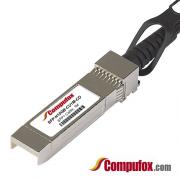Introduction to Bi-Directional Transceiver Modules
Almost all modern optical transceivers utilize two fibers to transmit data between switches, firewalls, servers, routers, etc. The first fiber is dedicated to receiving data from networking equipment, and the second fiber is dedicating to transmitting data to the networking equipment. But there is a type of fiber optic transceiver module called BiDi (Bi-Directional) transceiver to break this rule. What's BiDi transceiver? How does it work? And why people believe it will have broad market prospect? This tutorial will give you the answer.
What's BiDi Transceiver?
BiDi transceiver is a type of fiber optic transceivers which is used WDM (Wavelength Division Multiplexing) Bi-directional transmission technology so that it can achieve the transmission of optical channels on a fiber propagating simultaneously in both directions. BiDi transceiver is only with one port which uses an integral bidirectional coupler to transmit and receive signals over a single fiber optical cable. Thus, it must be used in pairs.
How Does BiDi Transceiver Work
The primary difference between BiDi transceivers and traditional two-fiber fiber optic transceivers is that BiDi transceivers are fitted with Wavelength Division Multiplexing (WDM) couplers, also known as diplexers, which combine and separate data transmitted over a single fiber based on the wavelengths of the light. For this reason, BiDi transceivers are also referred to as WDM transceivers.
To work effectively, BiDi transceivers must be deployed in matched pairs, with their diplexers tuned to match the expected wavelength of the transmitter and receiver that they will be transmitting data from or to.
For example, if paired BiDi transceivers are being used to connect Device A (Upstream) and Device B (Downstream), as shown in the figure below, then:

Advantages of BiDi Transceivers
The obvious advantage of utilizing BiDi transceivers, such as SFP+- BiDi and SFP-BiDi transceivers, is the reduction in fiber cabling infrastructure costs by reducing the number of fiber patch panel ports, reducing the amount of tray space dedicated to fiber management, and requiring less fiber cable.
While BiDi transceivers (a.k.a. WDM transceivers) cost more to initially purchase than traditional two-fiber transceivers, they utilize half the amount of fiber per unit of distance. For many networks, the cost savings of utilizing less fiber is enough to more than offset the higher purchase price of BiDi transceivers.




